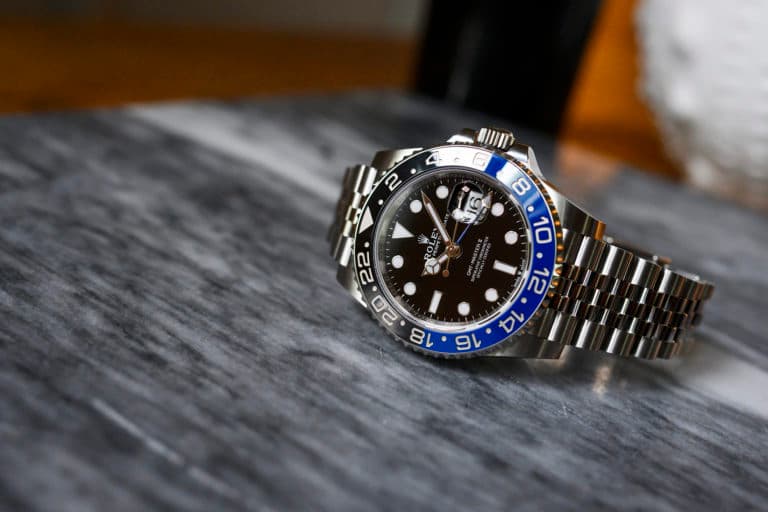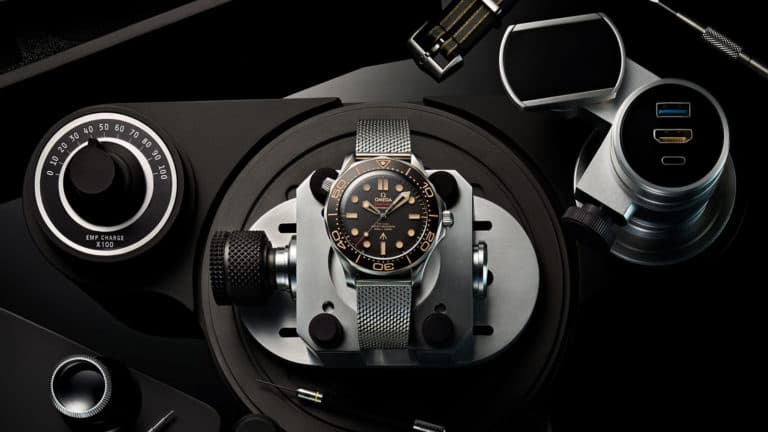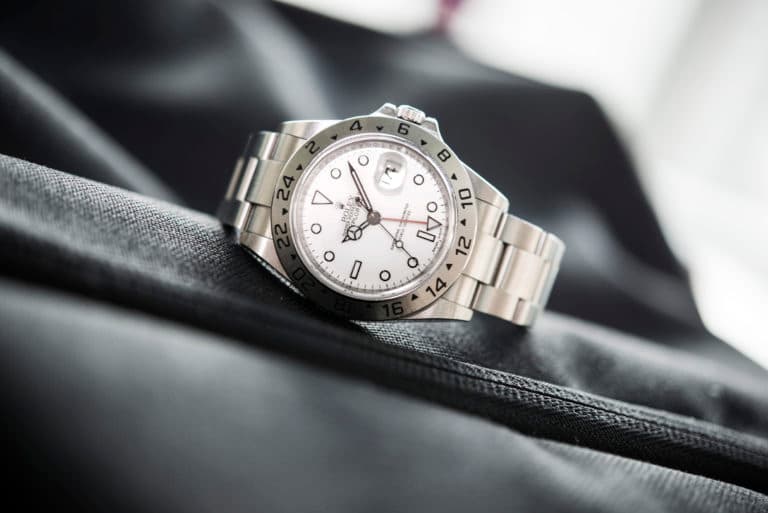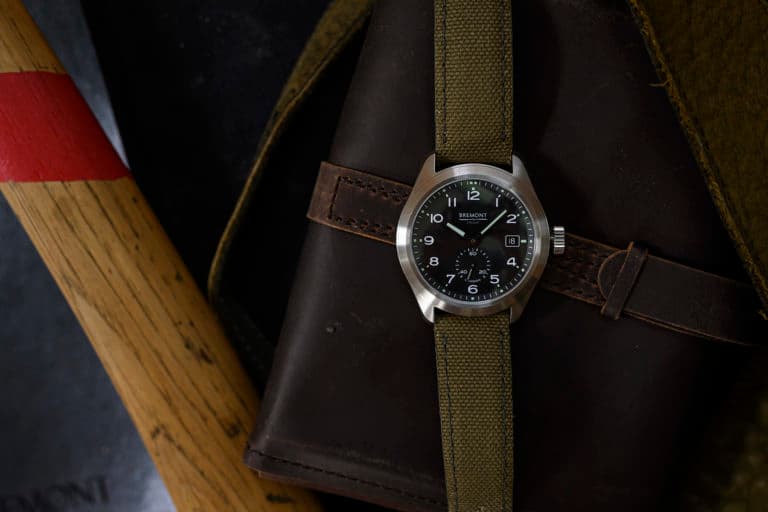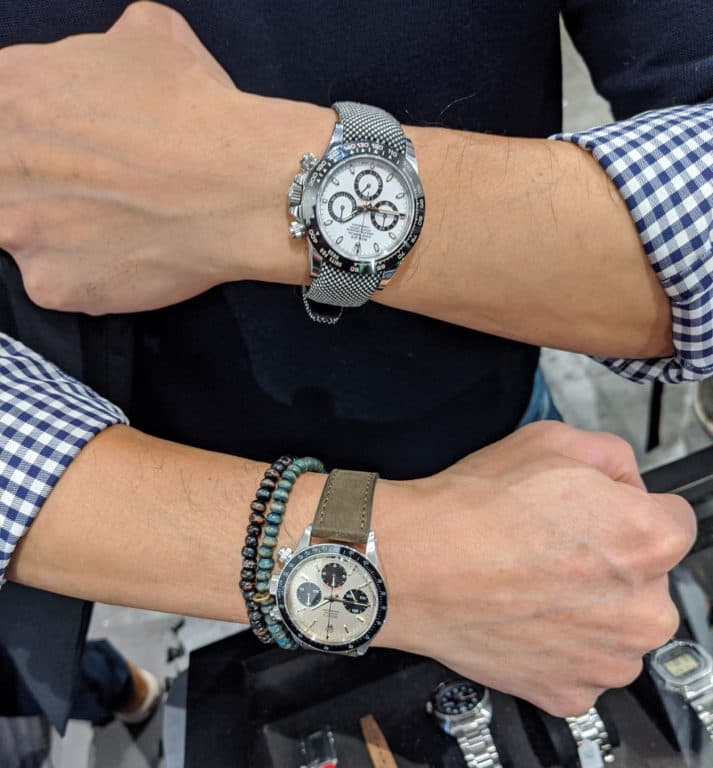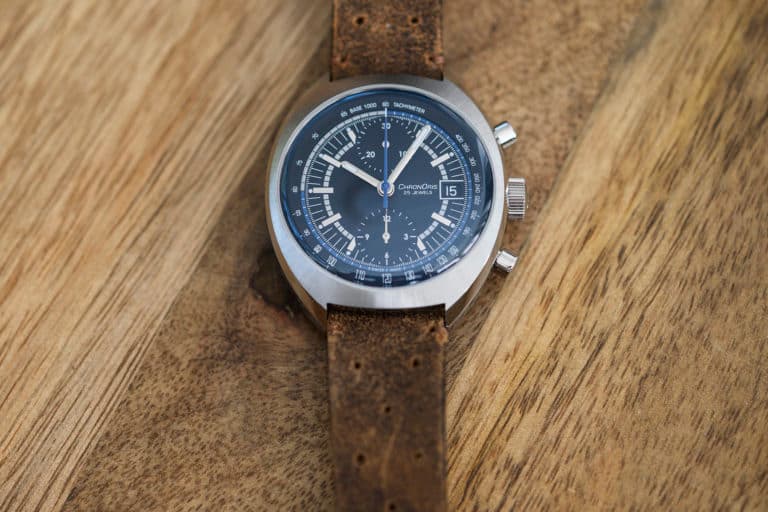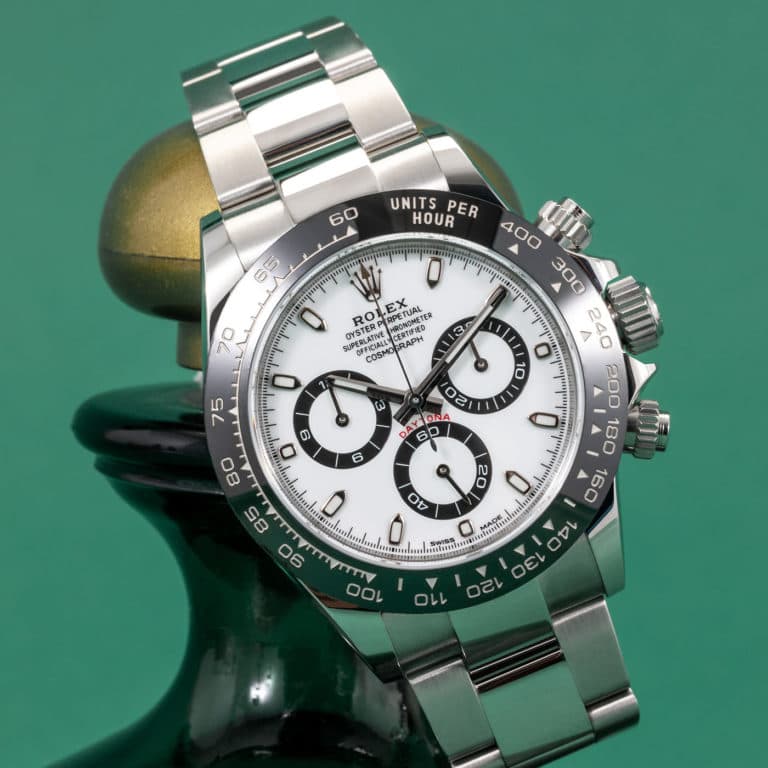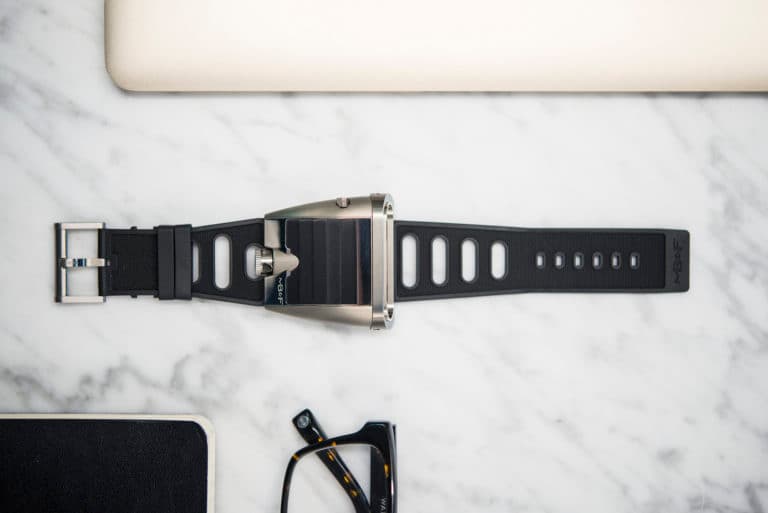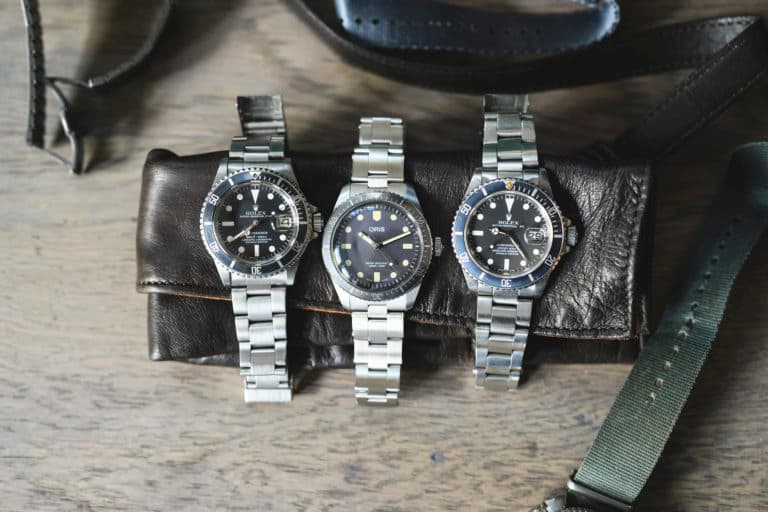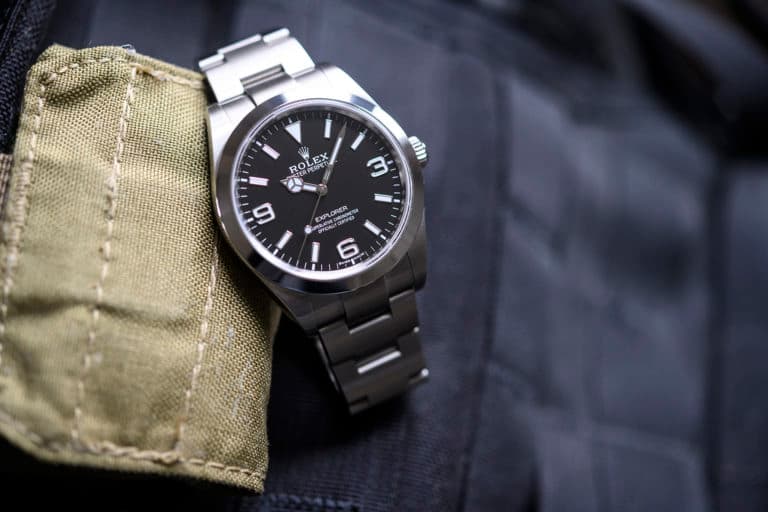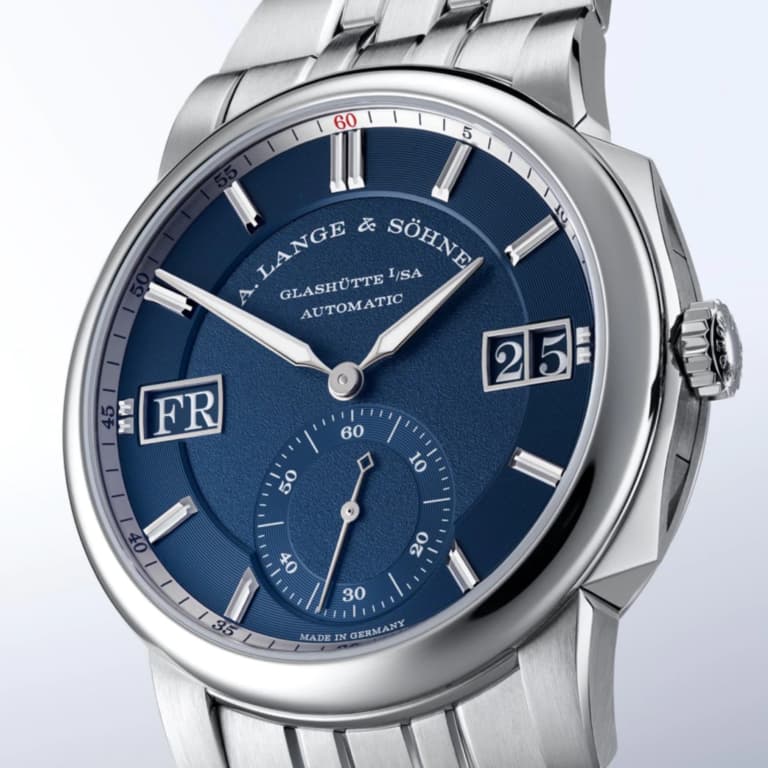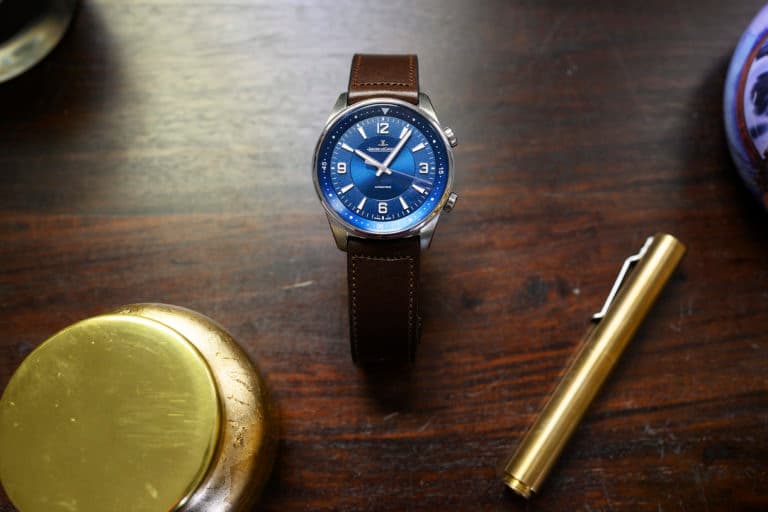Rolex wasn’t the only brand to drop a steel, Pepsi bezel GMT at this year’s Baselworld fair. Their sibling brand Tudor, welcomed the famed colorway into their stable for the first time in the form of an all new Black Bay with GMT complication, the reference M79830RB. If you felt that the Pepsi GMT from Rolex felt a little too “luxury” and not enough “tool” (see our full review of that watch right here), this Tudor should be right up your alley. Not only is it a lot more toned down in the flash department, it’s got callbacks to some of the early GMTs from Rolex, and is about as close to a throwback GMT as you’re going to see coming out of the Crown anytime soon.
While the Black Bay GMT has a lot of heritage appeal, there’s a lot that’s new here, including the movement, which was designed and built by Tudor. This is a lot of watch on its own right, especially when you consider its price point, which comes in under 50% of the cost of the Rolex GMT. There’s been a lot of hype around the release of this watch, and now that they’re slowly making their way into the market, we spent some time wearing one to see if it lives up the anticipation.
Tudor & Complications

It should come as no surprise that Tudor isn’t exactly known for their complicated watches. From the beginning, Tudor watches have been accessible tools with little in the way of extraneous features or distractions. A chronograph paired with a date is about as much as you could ask for (and generally, as much as you’d need). This is a big part of Tudor’s overall charm, and it makes the GMT a surprising in that, it has no real reference to the past given its overall usefulness. The Black Bay itself is a direct descendant of Tudor Submariners of the ‘50s and ‘60s, such as the ref. 7922 and 7924. These are dive watches through and through, with not so much as a date window making an appearance until 1969 with the reference 7021.
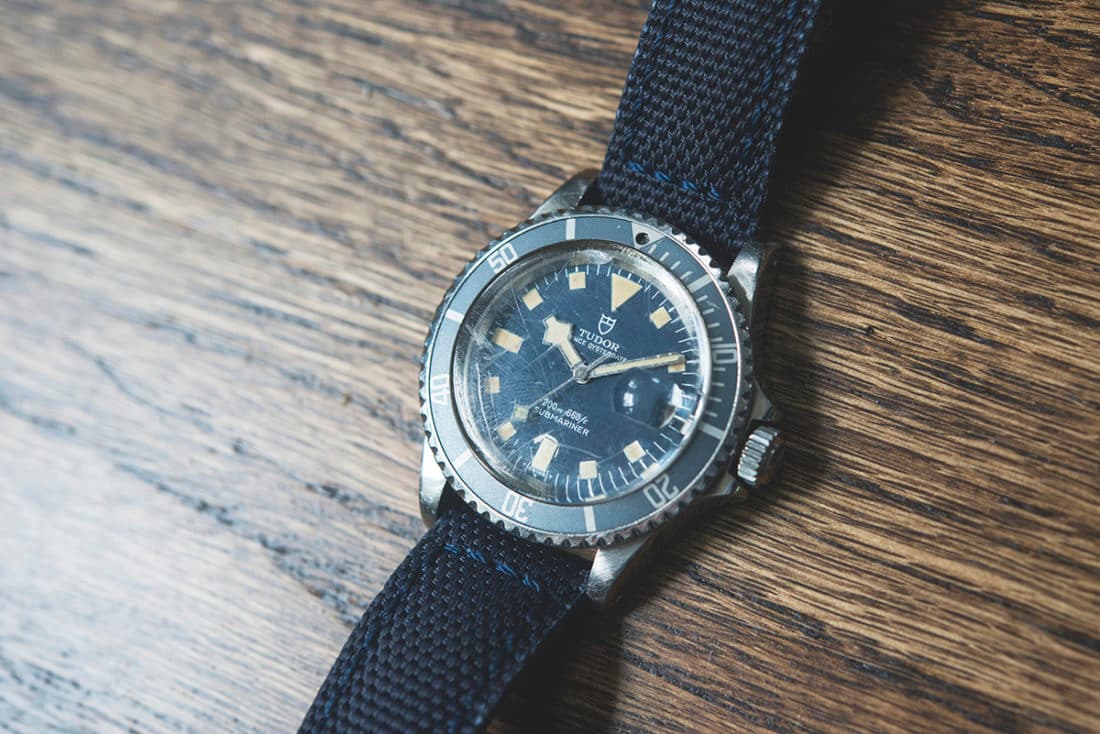
The GMT complication itself has deep roots when you include Rolex, who of course share more than just a founder with Tudor, but also suppliers and some manufacturing resources. In this sense, it’s a bit surprising we don’t see a watch like the GMT anywhere in the brand’s past. Especially odd considering the straightforward tool nature of the complication. Tudor even received the Day-Date treatment in the ‘60s, a complication reserved only for precious medals across the aisle. So where, then, was the GMT? The answer to that may be lost to history, but there’s a good chance that had one been built, it would have looked a lot like the newest Black Bay GMT.
How do we know this? Because of Rolex. The Black Bay GMT is more than a nod to early GMT models from Rolex, though, not in all the ways we’d like to see. It may not have a crown on the dial, but it’s as close to a throwback as we’ll be getting anytime soon.
The Tudor Black Bay GMT
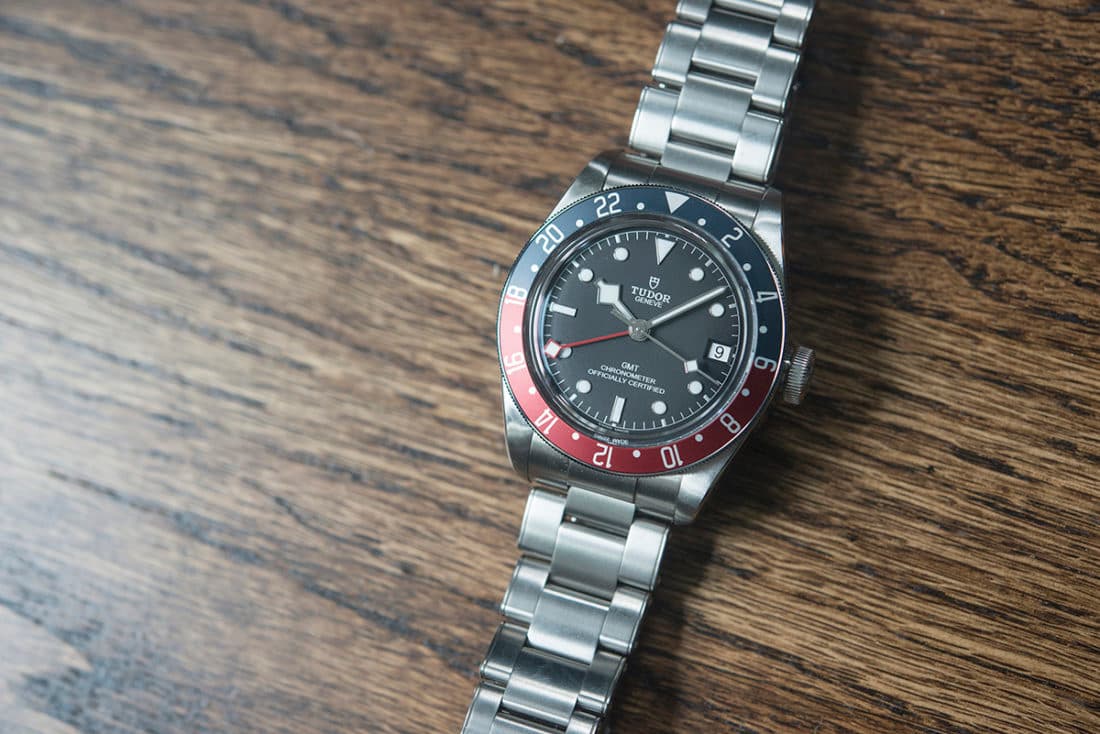
Let’s start with that throwback charm. There are three things right off the bat which the Black Bay GMT has that collectors would have loved to have seen on the latest Rolex GMT ref 126710 BLRO. Starting with perhaps the most noticeable of these, we have the bezel. Tudor may not employ the use of ceramic (or Cerachrom) as Rolex does, opting instead for a decidedly less sexy aluminum insert. The material however, is less a concern than how color is rendered upon it. The Tudor’s bezel is far more subdued than the Rolex, with a dark, almost navy top half, and a deeper blush red on the bottom half. In Tudor’s press images of the watch, the bezel appears brighter than you’ll experience it in the flesh in all but perfect lighting conditions.
While undoubtedly the star of the show here, the bezel somehow shys away from the spotlight. Whether this works or not is, of course, highly subjective, but there’s no doubt that those who prefer older models may find themselves opting for the look of the Tudor bezel over that of the Rolex. Additionally, and this is no small point, there exists the potential for the Tudor bezel to age. If you haven’t caught on yet, that kind of thing is a pretty big deal with long term collectibility. There’s no question the Tudor will take on age in a more noticeable (and desirable) fashion than the Rolex.
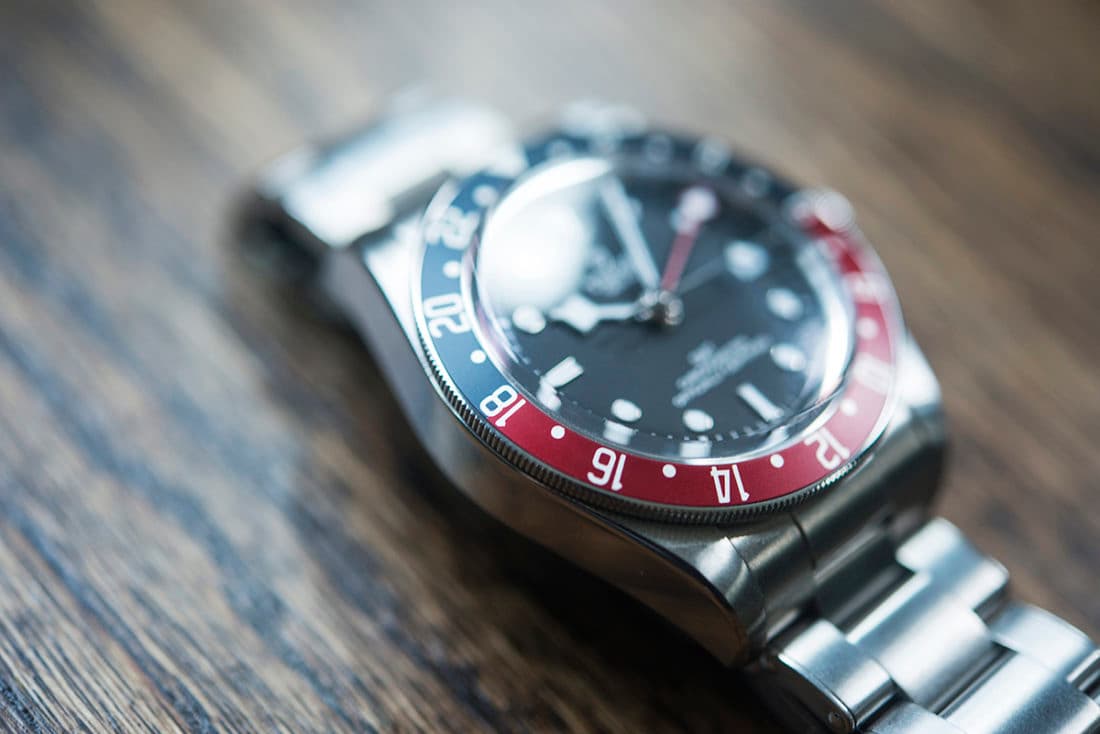
Functionally, the bezel does its job with no qualms, with light but sturdy clicks. There are 24 demarcations against which the 24 hour hand can read a second time zone at the wearer’s discretion. More on the GMT complication later, let’s get back to those throwback qualities.
Moving on from the bezel, we’ve got the dial. Rolex moved away from the matte dial in the mid ‘80s, instead using glossy dials across their range, including sport models like the Explorer and Sea-Dweller. Tudor has embraced the matte dial on their sport models, and the Black Bay GMT is no exception. It’s the biggest contributor to the overall character of the watch that still falls into the “can’t quite put my finger on it” territory. Short of applying the hour marker lume sans white gold surrounds, it’s a pure throwback dial that hits all the right notes.
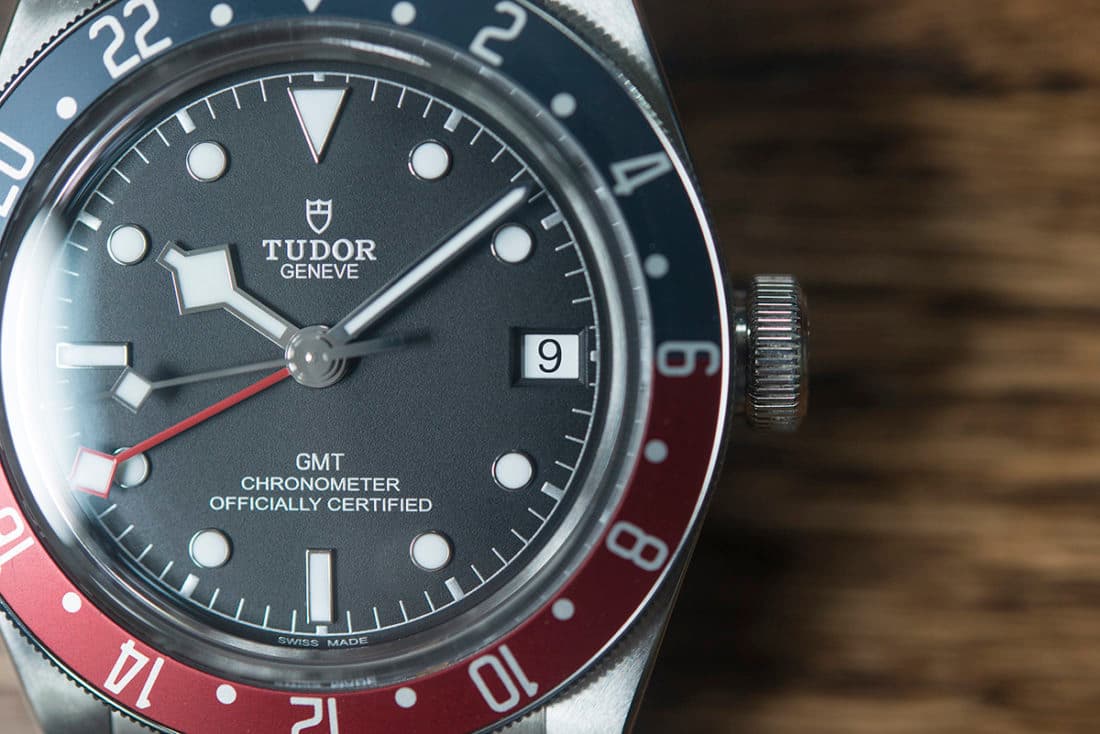
The dial itself contains little in the way text, with the Tudor signage and shield at 12 o’clock, and the GMT label at 6 o’clock, which is joined by the words “chronometer – officially certified” underneath. If we’re getting nit-picky, the “officially certified” portion could have been left off for a cleaner look, and reduced tension between the words and the 5 and 7 o’clock hour markers. The hour markers themselves have also been the subject of some unrest due to their rather diminutive size. The slimmed down markers fall more inline with what we see in references like the 14060 Submariner and 16710 GMT from Rolex, both hailing from the late ‘80s through the ‘90s.
Joining the bezel and the dial to hammer home the throwback approach is the case design, more specifically, the lack of crown guards. Looking back once again to some of the earliest Tudor Submariners, we don’t see the introduction of crown guards until 1959 with the reference 7928. Given the Black Bay’s original inspiration being models from the mid ‘50s, its case was never given crown guards (except for the Black Bay Chronograph), and the GMT follows suit here. The very first Rolex GMT-Master reference, the 6542 from 1954, also lacked crown guards, and will be a welcome design choice by those looking for a true throwback GMT from Rolex in the form of a Tudor. The rest of the case, while certainly similar in shape to the original models, is far from similar in size, which belies the Black Bay GMTs biggest weak point: its dimensions.
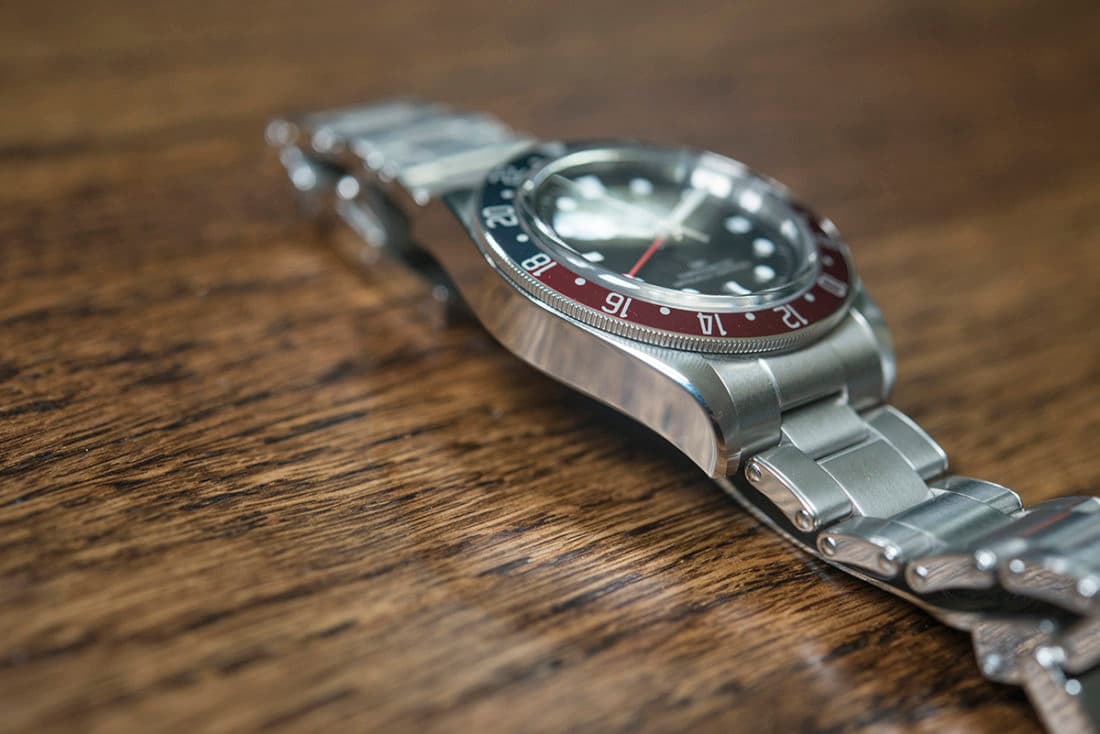
The case of the Black Bay GMT is 14.80 millimeters thick. This is due in part to the slightly domed crystal (a feature we very much like), and to the fact that this uses the same case as every other time only Black Bay, a watch not known for its slender dimensions. Like the regular version, there is ostensibly no reason for these watches to be this thick, given their simple nature, and the addition of a GMT complication certainly shouldn’t saddle the movement with a great deal of complexity. Especially considering the fact that Tudor made this movement in-house.
The Movement
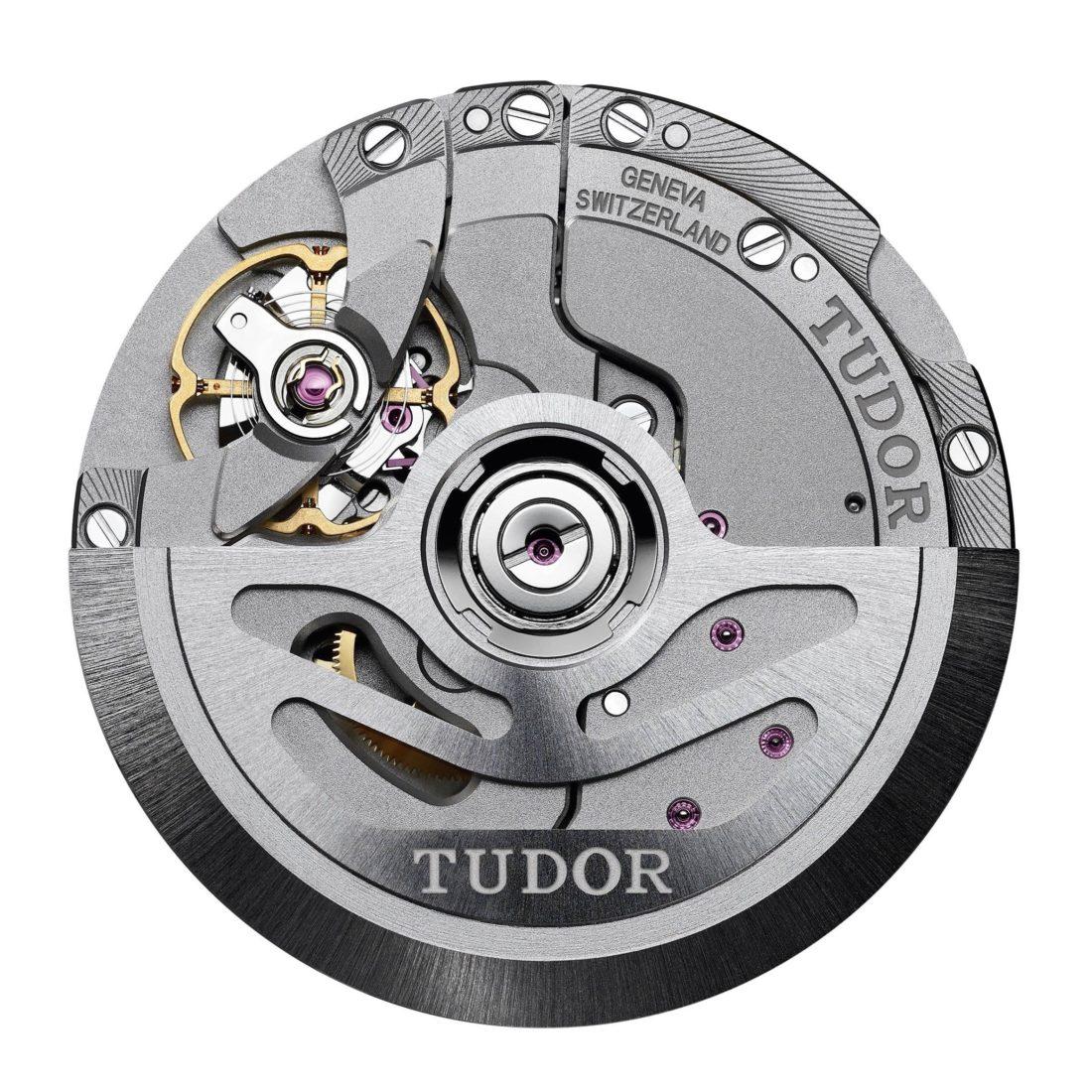
Tudor continues to flesh out their in-house caliber catalog with the Black Bay GMT, fitting it with their newest manufacture movement, the MT5652. Now, it’s important to understand that Tudor could have fitted one of their existing manufacture movements with a GMT module. Thankfully, they didn’t go that route. The MT5652 incorporates the GMT complication internally, which imparts a few benefits worth noting.
First off, there will be less parasitic loss of energy as the going train has the 24 hour hand factored directly into it. This amounts to a more accurate movement, which the MT5652 most certainly is, and has the COSC certification to back it up. In our time with the watch, it never wavered from a +2 second deviation a day. Even better when coupled with the robust 70 hours of power reserve available.
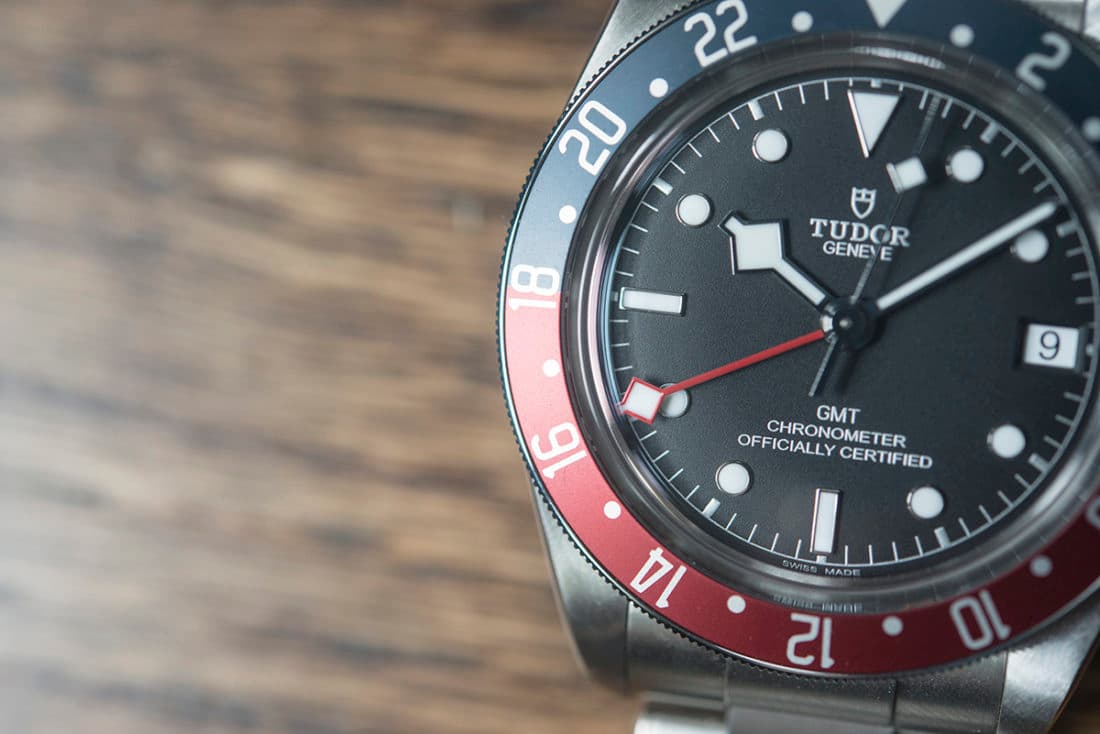
Additional features of the MT5652 include a variable inertia balance, allowing for easier adjustment on the balance wheel to allow for quick rate adjustments. At its heart beats a non-magnetic silicon balance spring. The balance is secured by a seriously hefty bridge with screws at each end. It’s clear that this movement is built to withstand some serious wear and tear, and the visual decoration only adds to that feeling. It may not be visible through the caseback, but if you cracked the Black Bay GMT open, you’d be greeted by bevy of brushed and bead blasted plates and a skeletonized oscillating weight. It’s the kind of no-fuss construction you’d expect from something out of your toolbox.
The MT5652 is 7.5mm thick, which is 1.5mm thicker than the MT5402 you’d find in the Black Bay 58. So we likely won’t see this complication (at least in this movement) make the jump to a substantially slimmer case down the line, but hey, the GMT is 14.80mm thick, and the 58 is 11.9mm thick. Not to put too fine a point on it, but a 13.5mm thick GMT would make an enormous difference, and as far as the numbers go, seems to be feasible.
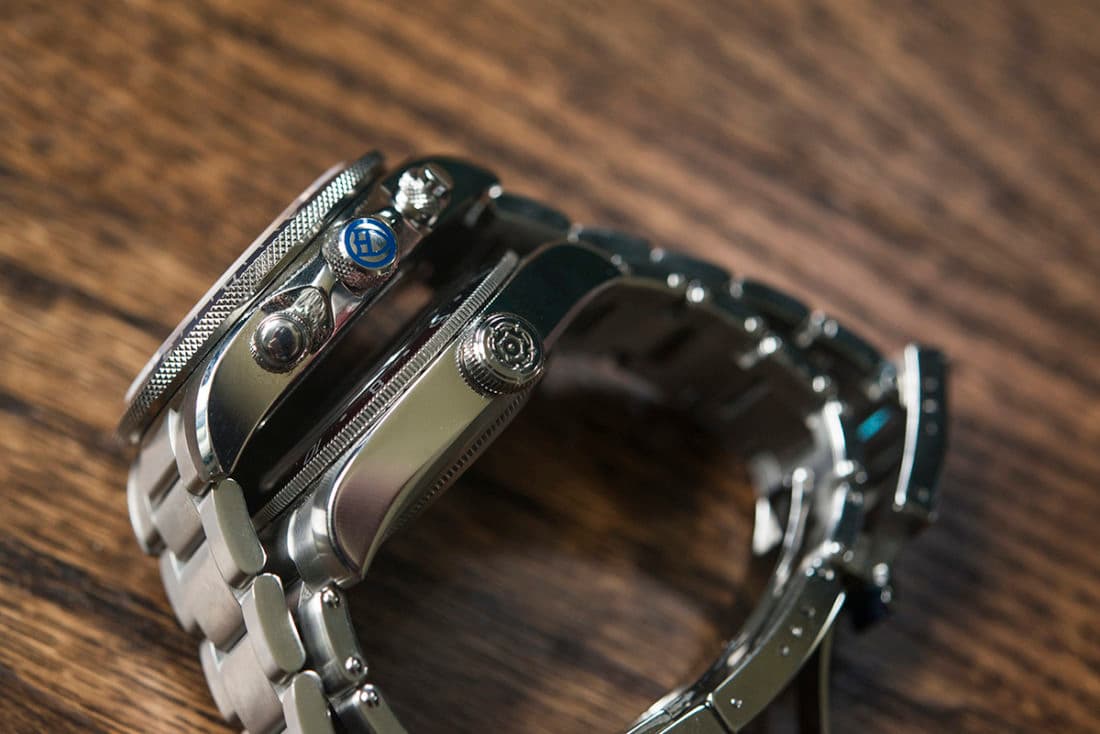
Stepping away from our gripes about thickness, the MT5652 is a robust and feature rich movement that makes using the watch all the easier. Let’s go through the stops of the crown to explain the functionality. Stop 0 (unscrewed but not pulled out) winds the movement (rather smoothly, we might add); stop 1 adjusts the hour hand in 1 hour increments; stop 2 hacks the movement, and sets the time advancing the minute and hour hands. The GMT hand can be adjusted at that last stop as well, allowing you to keep it set to home time, and make quick hour adjustments when you’re on the move. The 24hr bezel rotates as well, so the most adventurous among us could technically track three time zones at once (assuming you can remember the day/night cycle of the 24 hour hand).
On The Wrist
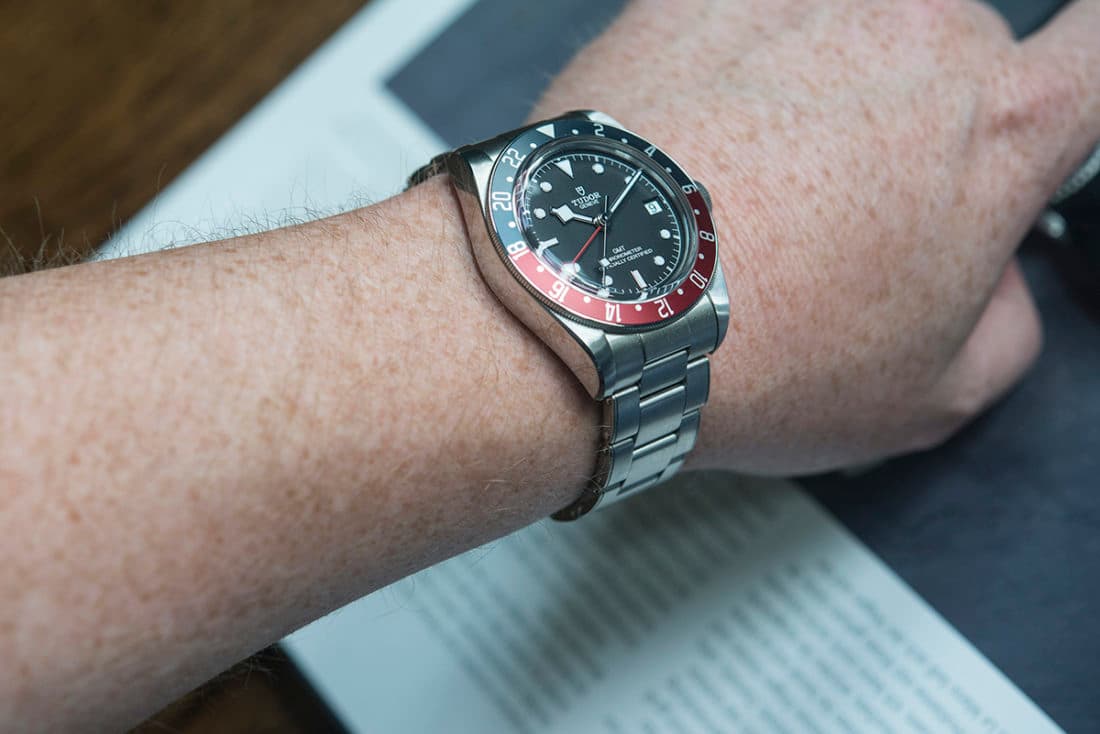
Let’s get this out of the way, the Black Bay GMT wears a bit thick on the wrist. If you’ve worn any other Black Bay, this will come as no surprise, and if you can wear those without issue, the GMT will present no problems. In fact, it’ll be a bit easier thanks to one small construction detail that’s easy to overlook. Where the case walls of every other black bay are monolithic in flatness, make a 90º angle at their base, the GMT is beveled that edge to nestle the case on the wrist. It’s a small but noticeable difference, and a sign that Tudor does acknowledge the case issue with the Black Bay.
That said, the GMT isn’t unwearable. It’s comfortable enough for daily use, but you will notice it on the wrist. If you’re coming from something like a Rolex Explorer or a vintage watch, you’ll really notice it.
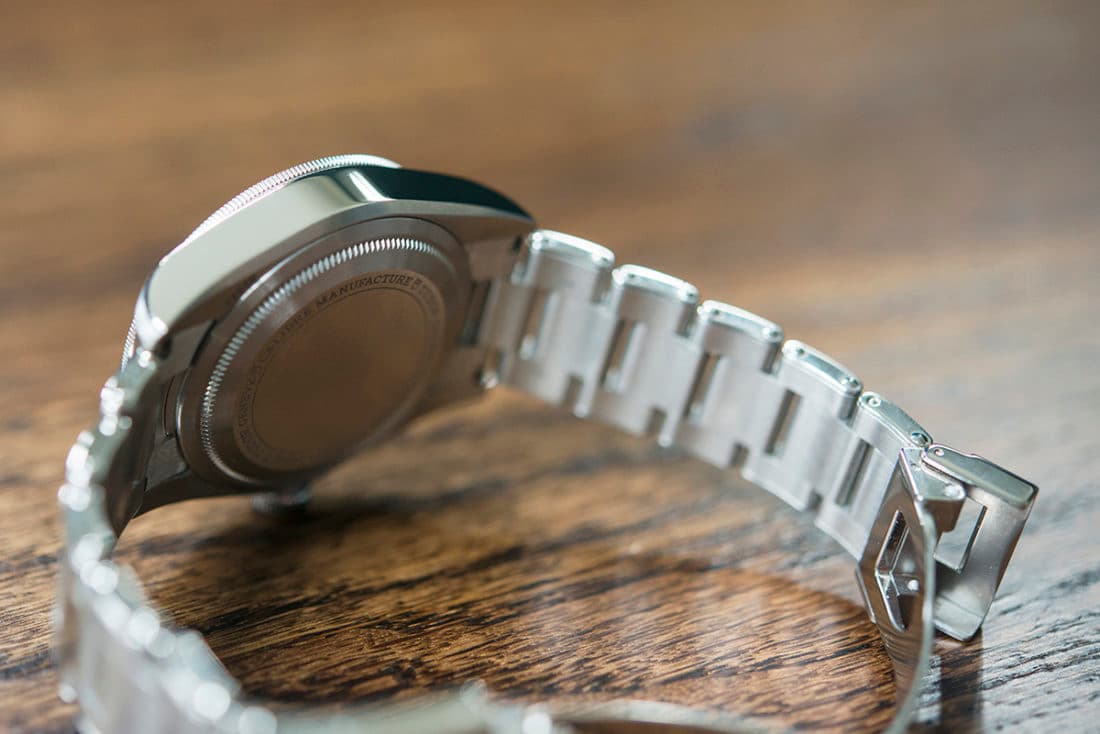
Legibility is strong here thanks to snowflake hands set against the simple dial and subtle bezel. Lume helps in low visibility situations, even with the smaller hour plots. The 24 hour hand is red with a snowflake tip, and doesn’t get in the way of general time reading. Let’s take a moment to talk about those hands, though. The 24 hour hand, the hour hand, and the seconds hand all have a snowflake end to them. Looking at them all at once is a bit jarring, though if you’re not looking for it (ie. just checking the time), it’s not a problem. If you’re picky about aesthetics, it might get old fast. Additionally, and this is getting really nit-picky, the 24 hour hand is long, like nearly butting against the rehaut long. Yes, this is because it’s meant to read time against the bezel, but the fact that it extends beyond the minute track is visually unsettling.
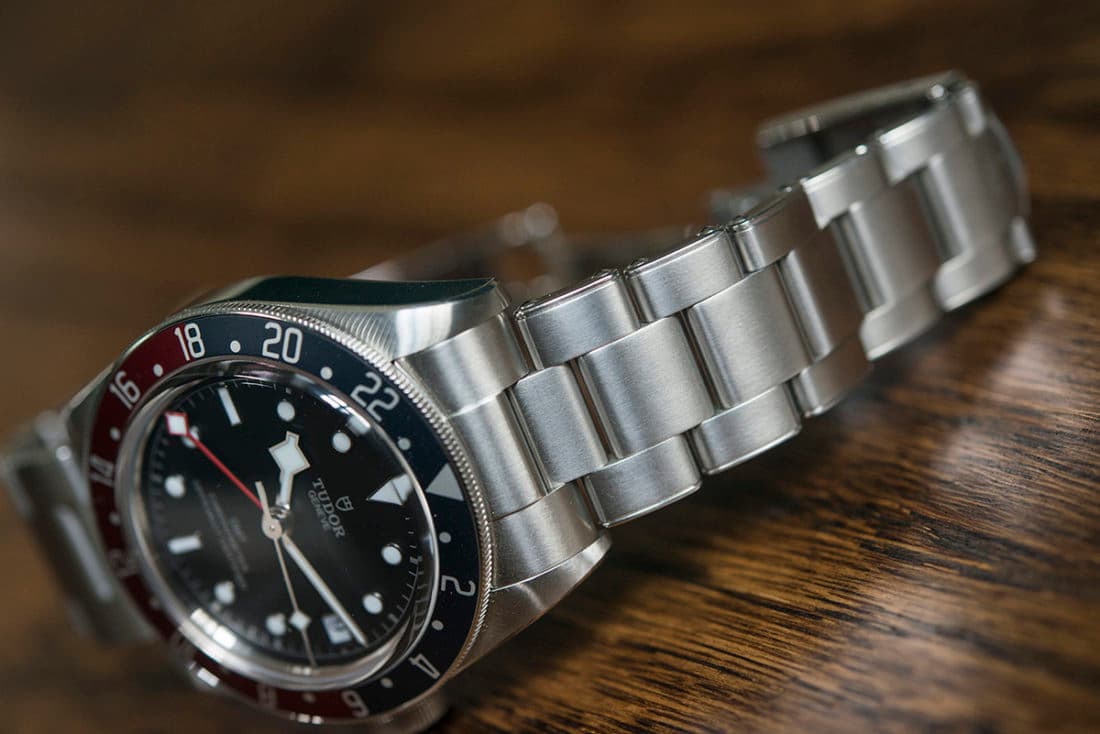
The brushed oyster bracelet has riveted link ends, which again are a nice callback to vintage references. It’s a feature you’d find on pre-1969 Tudor Submariners, and adds to the “tool” vibe of the whole package. The clasp is adequate here, working as intended but nothing that elevates the watch. Overall the bracelet is serviceable and comfortable, but you’d be tempted to try other options, such as the optional nato, or even third party options which are plentiful. We suspect this look will hold up under a variety of colors and materials.
Pricing and Competition
Tudor has priced the Black Bay GMT from $3,575 on a fabric nato or distressed leather strap, on up to $3,900 on the steel bracelet. For what the watch is, these prices are incredibly competitive. Keep in mind, this a brand with heritage, and a claim to the Pepsi colorway (even if tangentially), building a new, robust in-house movement with integrated complications for this watch. What else can you get on StockX right now that hits each of these notes for under $4,000?
IWC Pilot XVIII Heritage IW327006
Hear us on this one. It’s a pilot’s watch, it’s an historic brand, and it can be had south of $4,000. Sure it’s not an in-house movement, and there’s no real complications here outside of the date, but it’s far slimmer than the Tudor, features an iconic dial design that’s equally if not more cohesive, and has a titanium case. This is a watch that could easily serve as an only watch, taking an daily duty with ease. Not a perfect match, but we like it.
Grand Seiko Hi-Beat GMT SBGJ219
This one does hit all the same criteria set by the Tudor, but it doesn’t come from Switzerland. Grand Seiko are legendary for their quality, and this Hi-Beat GMT is no exception. The movement (and everything else about the watch) is designed and manufactured in-house. In this case, that’s the caliber 9S86, a well decorated and insanely accurate bit of kit visible through the caseback. It may not have a sporty bezel like the Tudor, but it does have the GMT complication with the 24 hour demarcations right on the dial. These are priced a bit north of the Tudor, but are still in the ballpark.
Okay, this may be cheating as this one is out of production, but pre-owned prices are close enough to the Tudor to include. This Explorer II, which went out of production in 2012 matches the Tudor step for step in terms on in-house movement with GMT hand, brand heritage (duh), and price accessibility. On top of that, it’s a scant 12mm thick, and wears exceptionally well. It’s the full package with a well proven track record in the pre-owned market.
Should You Buy It
Tudor has done something remarkable with Black Bay GMT. They’ve expanded the Black Bay family in a meaningful way, and introduced a new movement to their stable. Further, the design is clearly well thought out, and crafted with respect to history of both Tudor and Rolex. It fills the demand for a throwback GMT while allowing Rolex to plow full speed ahead with their GMT-Master family. Most impressive of all, they’ve brought this to market at a price accessible to nearly everyone.

If you like the idea of wearing a vintage watch, but simply don’t have the means or the bravery to wear one everyday, Tudor has done you a great service with the Black Bay GMT. You’ll get all the bells and whistles you want from a modern watch, with enough of a nod to the past to satisfy your vintage sensibilities. If that sounds like you, pick up the phone right now and call your local AD to get on their wait list. If, on the other hand, you like vintage watches not just for their looks, but for the way they wear, the Black Bay GMT might not be your best bet. However, you should still phone your nearest Tudor AD and put your name on the list, just do it for the Black Bay 58 instead. We’ll have a review of that as soon as we can get our hands on one.








